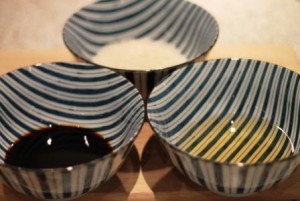
As a sushi chef Bar Hayama is the restaurant I know best. In 2006 I was trained to become a sushi chef at California Sushi Academy. Next to the culinary school were Toshi’s sushi restaurant where we worked in the sushi bar and did catering.
In 2012, I was back in LA where my teacher Toshi introduced me to a nigiri technique that takes 20 years of master.
There is a big difference between whether you are trained by Japanese sushi chefs or trained in Denmark.
Japanese sushi chefs have other work procedure and use completely different techniques than European sushi chefs. When I work with Japanese sushi chefs with 36 years of experience the quality and taste of the sushi being produced is something completely different.
Read more about Sushi chef & sake sommelier Zoë Escher
_
Zoë has held sushi courses and cooking classes for A. P. Moller – Maersk, Hugo Boss Nordic, Novo Nordisk, Novartis, Velux, Gorrissen Federspiel, Beierholm revision, Elbek & Vejrup and many more.









